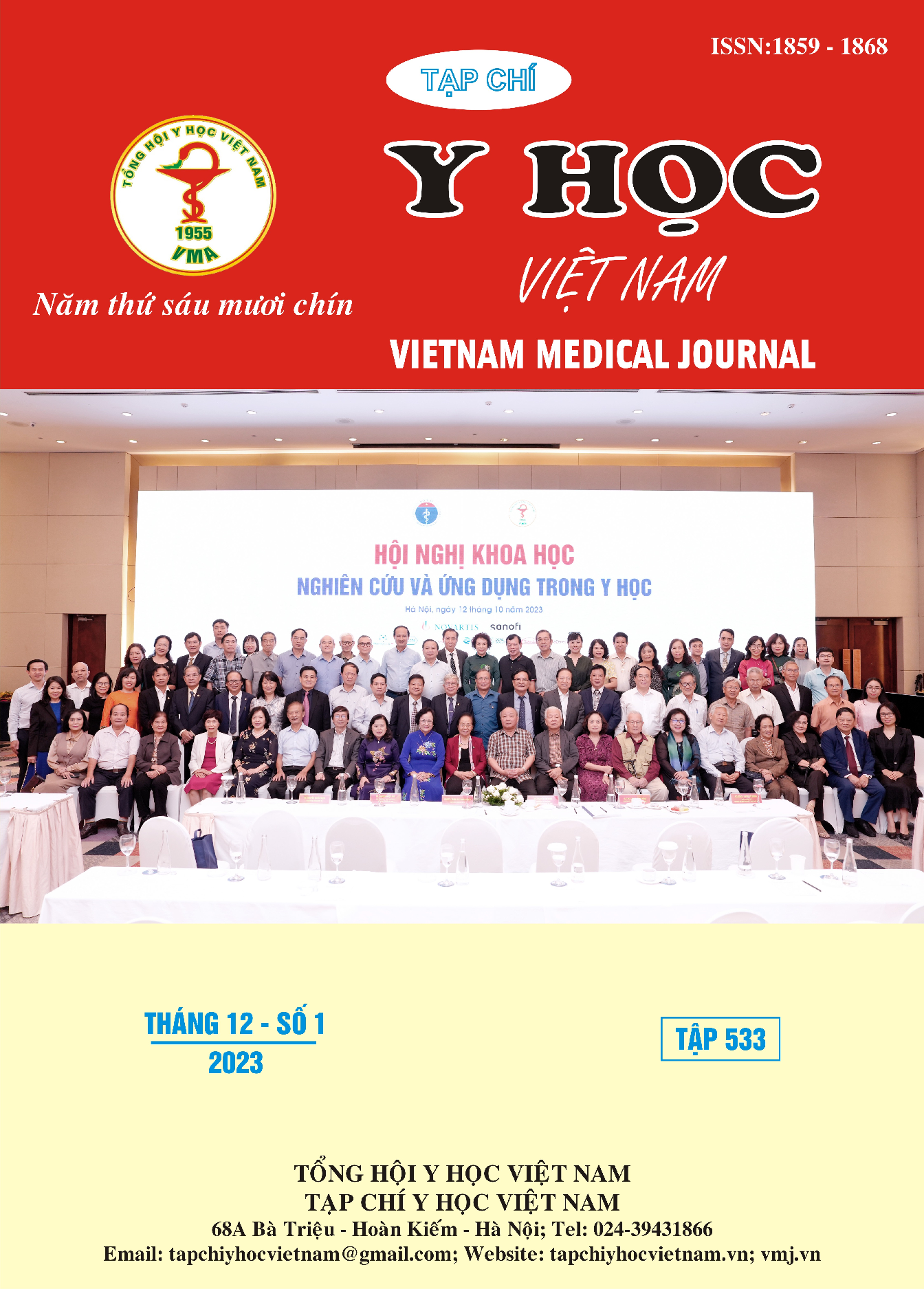RESEARCH SITUATION OF BLOOD LIPID DRUGS AND SURVEY OF THE CORRELION BETWEEN LDL-C CONCENTRATION QUANTITATIVE BY DIRECT AND INDIRECT METHOD AT CAN THO CITY GENERAL HOSPITAL, 2021
Main Article Content
Abstract
Background: In the world, there have been many studies on the correlation between indirect methods of LDL-cholesterol quantification with direct. Objectives: To investigate the correlation between LDL-C concentration calculated by indirect formula (Friedewald's formula and de Cordova's formula) with direct quantitative method in fat testers at the hospital. Can Tho city department, 2022. Materials and methods: A cross-sectional, retrospective descriptive study on 3700 blood samples of patients with indications for cholesterol, triglyceride, HDL-c and LDL-c tests. Cholesterol, triglyceride, HDL-c and LDL-c concentrations were directly quantified, and LDL-C concentrations were estimated using the Friedewald and de Cordova formula. Results: The difference in mean LDL-C concentration between the indirect methods of Friedewald and de Cordova and the direct method (2.45±0.96mmol/L) was 2,421,16mmol/L and 2,070,92mmol/L. The correlation coefficient of Friedewald's indirect method was r=0.76 (p<0.01) and de Cordova was r=0.912 (p<0.01) compared with the direct method, indicating a strong, positive correlation. The linear regression equation between the indirect method Friedewald and de Cordova with the direct method was y=0.188x+0.903 and y=0.432x+0.876, respectively. Conclusion: Quantitative LDL-C concentration between the two indirect methods had a low difference compared with the direct method. There was a strong, positive correlation between the indirect method Friedewald and de Cordova and the direct method.
Article Details
Keywords
Friedewald, de Cordova, LDL-C
References
2. Friedewald W T, Levy R I, Fredrickson D S (1972), "Estimation of the concentration of low-density lipoprotein cholesterol in plasma, without use of the preparative ultracentrifuge", Clin Chem, 18 (6), pp. 499-502.
3. Lin Qiu-zhen, Chen Yan-qiao, Guo Li-Ling (2019), "Comparison of non-fasting LDL-C levels calculated by Friedewald formula with those directly measured in Chinese patients with coronary heart disease after a daily breakfast", Clinica Chimica Acta, 495 pp. 399-405.
4. Nguyễn Minh Hà, Nguyễn Ngọc Tâm (2018), "Tương quan và tương hợp nồng độ LDL-C định lượng trực tiếp và ước tính bằng công thức de Cordova", Tạp chí Y học TP.Hồ Chí Minh, 22 (4), tr. 344-352.
5. Garoufi Anastasia, Drakatos Antonis, Tsentidis (2017), "Comparing calculated LDL-C with directly measured LDL-C in healthy and in dyslipidemic children", Clinical biochemistry, 50 (1-2), pp. 16-22.
6. Nguyễn Hồng Hạt, Trần Ngọc Dung (2021) “Tương quan tuyến tính giữa các phương pháp định lượng gián tiếp và trực tiếp LDL-Cholesterol tại khoa xét nghiệm bệnh viện Đa Khoa Hoàn Mỹ Minh Hải”, Tạp chí Y Dược học Cần Thơ, pp. 150-157.
7. Nguyễn Thị Cẩm Châu, Vũ Quang Huy (2010), "So sánh hai phương pháp định lượng LDL- c trực tiếp và gián tiếp", Tạp chí Y học TP.Hồ Chí Minh, tr. 163-172.
8. Nishtha Wadhwa, Radhika, Krishnaswamy (2016), "Comparison of LDL-Cholesterol Estimate using Various Formulae with Directly Measured LDL-Cholesterol in Indian Population", J Clin Diagn Res, 10 (12), pp. BC11-BC13.
9. Martins J, Olorunju Steve AS, Murray LM (2015), "Comparison of equations for the calculation of LDL-cholesterol in hospitalized patients", Clinica Chimica Acta, 444 137-142.
10. Hansol Choi, et al (2016), "Comparison of formulas for calculating low-density lipoprotein cholesterol in general population and high-risk patients with cardiovascular disease", Korean circulation journal, 46 (5), 688-698.
11. Azam Karkhaneh, Molood Bagherieh, Solmaz Sadeghi (2019), "Evaluation of eight formulas for LDL-C estimation in Iranian subjects with different metabolic health statuses", Lipids in Health and Disease, 18 (231), pp. 1-11.


